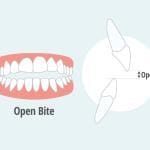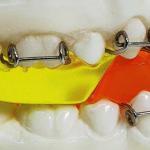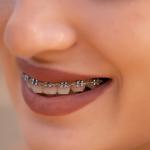A deep bite, also known as an overbite, is a common dental condition where the upper front teeth excessively overlap the lower front teeth. This misalignment can affect both the appearance and functionality of the teeth and jaw. In this article, we will explore the causes of deep bite, its potential effects on oral health, and various treatment options available to correct this condition.
Causes of Deep Bite
Several factors can contribute to the development of a deep bite. These include:
- Genetic Predisposition
- Thumb Sucking or Tongue Thrusting
- Malocclusion
- Jaw Misalignment
Genetic Predisposition
In some cases, individuals may have a family history of deep bite, indicating a genetic predisposition to the condition.
Thumb Sucking or Tongue Thrusting
Persistent habits such as thumb sucking or tongue thrusting can lead to the misalignment of teeth and jaw, resulting in a deep bite.
Malocclusion
Irregularities in the size, shape, or positioning of the teeth can cause a deep bite.
Jaw Misalignment
A discrepancy between the size of the upper and lower jaws can contribute to the development of a deep bite.
Effects of Deep Bite
Deep bite can have various effects on oral health, including:
- Tooth Wear and Damage
- Temporomandibular Joint (TMJ) Problems
- Speech Impediments
- Esthetic Concerns
Tooth Wear and Damage
The excessive overlap of the upper and lower teeth can lead to uneven distribution of bite forces, causing accelerated wear and potential damage to the tooth enamel.
Temporomandibular Joint (TMJ) Problems
Deep bite can disrupt the proper alignment of the temporomandibular joint, resulting in TMJ disorders. Symptoms may include jaw pain, headaches, and difficulty in opening or closing the mouth.
Speech Impediments
In severe cases, deep bite can affect speech clarity and cause lisping or other speech impediments.
Esthetic Concerns
Deep bite can alter facial aesthetics, with the upper teeth appearing excessively prominent and the lower jaw receding.
Treatment Options for Deep Bite
Fortunately, there are several treatment options available to correct deep bite, depending on the severity of the condition. These include:
- Orthodontic Treatment
- Tooth Extraction
- Bite Plates or Splints
- Orthognathic Surgery
Orthodontic Treatment
Braces or clear aligners are commonly used to gradually move the teeth into proper alignment. This method applies gentle pressure to reposition the teeth and correct the deep bite.
Tooth Extraction
In certain cases, extracting one or more teeth may be necessary to create space for proper alignment. This approach is typically recommended when overcrowding contributes to the deep bite.
Bite Plates or Splints
These removable appliances can be used to temporarily correct deep bite by guiding the jaw into a more favorable position. They are often used in conjunction with orthodontic treatment.
Orthognathic Surgery
In severe cases, surgical intervention may be required to correct the skeletal or dental components of the deep bite. This option is usually considered when other treatments cannot sufficiently address the condition.
Maintenance and Prevention
After successful deep bite correction, it is important to maintain the results and prevent relapse. This can be achieved through:
- Retainers
- Oral Hygiene
- Awareness of Habits
Retainers
Wearing retainers as prescribed by the orthodontist helps to stabilize the corrected bite and prevent the teeth from shifting back.
Oral Hygiene
Good oral hygiene practices, including regular brushing, flossing, and dental check-ups, are essential for maintaining healthy teeth and gums.
Awareness of Habits
Avoiding thumb sucking, tongue thrusting, or other detrimental habits can help prevent the recurrence of deep bite.
Conclusion
Deep bite is a common dental condition that can affect both oral health and facial aesthetics. Thankfully, various treatment options are available to correct this misalignment. Consulting with a qualified orthodontist or dentist is crucial to determine the most appropriate treatment plan for each individual case. By addressing deep bite, individuals can achieve improved oral health, functional bite alignment, and a more aesthetically pleasing smile.
Remember that early intervention is often beneficial when it comes to treating deep bite. It is recommended to have regular dental check-ups starting from childhood to monitor dental development and identify any potential orthodontic issues. If deep bite is detected, timely intervention can prevent further complications and simplify the treatment process.
Additionally, maintaining good oral hygiene practices and being mindful of habits that can contribute to deep bite, such as thumb sucking or tongue thrusting, can play a vital role in prevention. Encouraging children to break these habits at an early age can help prevent the development of deep bite.
In conclusion, deep bite is a common dental condition that can affect the alignment of the teeth and jaw, leading to various oral health concerns and aesthetic issues. However, with the advancements in orthodontic treatments and surgical techniques, it is possible to correct deep bite and achieve a functional and aesthetically pleasing bite alignment. Seeking professional advice and timely intervention are crucial in addressing deep bite and preventing further complications. By taking proactive measures and being aware of potential risk factors, individuals can maintain optimal oral health and enhance their overall well-being.





